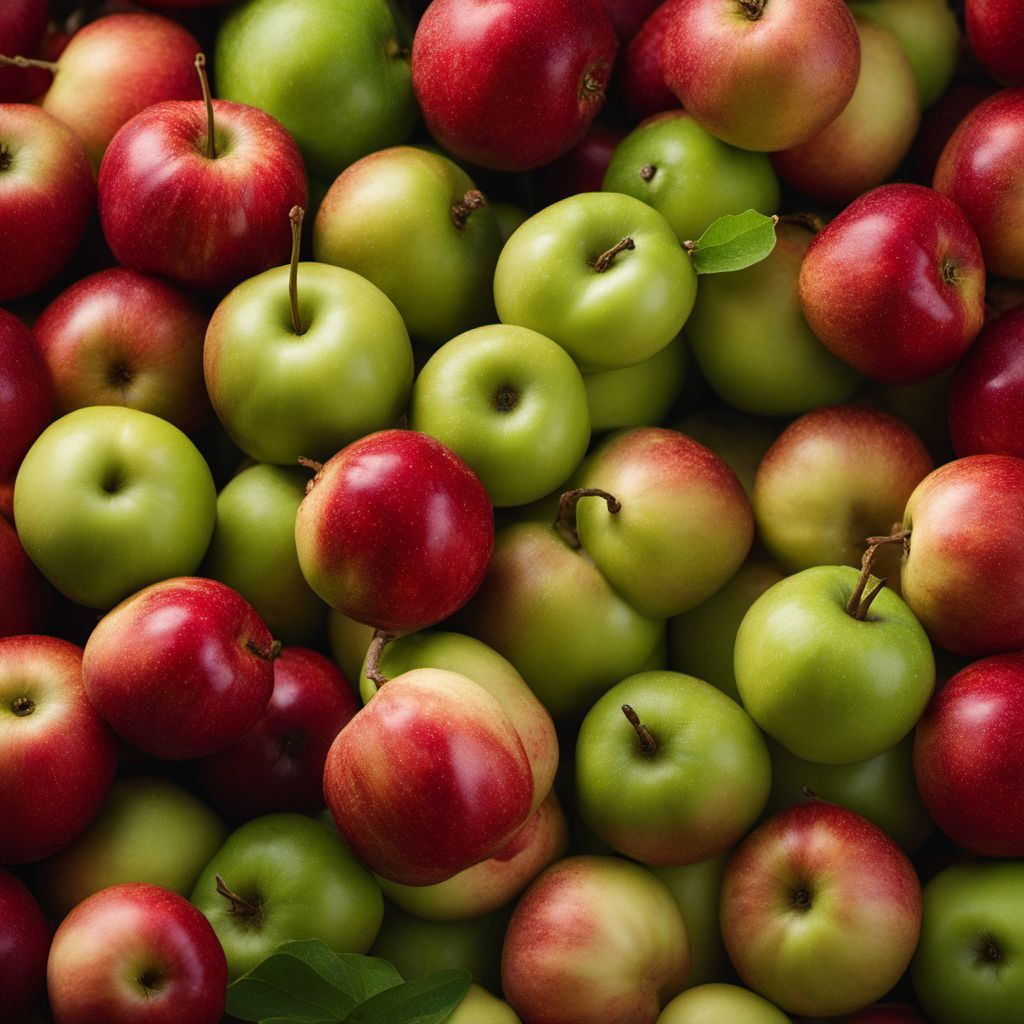
Ingredient
Star apples and similar-
Exotic Delights: Exploring Star Apples
Star apples are small to medium-sized fruits with a smooth, glossy skin that can be either purple or green, depending on the variety. When cut open, the flesh reveals a star-shaped pattern, hence the name. The flesh is creamy, juicy, and sweet, with a slightly grainy texture. The flavor is reminiscent of a blend of tropical fruits, with hints of grape, pear, and lychee. Star apples are best enjoyed fresh, as a refreshing snack or in fruit salads.
Origins and history
Star apples are native to the Caribbean and Central America, where they have been cultivated for centuries. They hold cultural significance in these regions and are often associated with tropical landscapes and warm climates. The fruit is believed to have originated in the West Indies and was later introduced to other tropical regions around the world. Today, star apples can be found in countries such as Jamaica, the Dominican Republic, the Philippines, and Thailand.
Nutritional information
Star apples are a good source of dietary fiber, vitamin C, and potassium. They are also low in calories, making them a healthy choice for those watching their weight. A 100-gram serving of star apple provides approximately 67 calories, 1.1 grams of fiber, and 18.4 milligrams of vitamin C.
Allergens
There are no known allergens associated with star apples.
How to select
When selecting star apples, look for fruits that are firm but slightly yielding to gentle pressure. Avoid fruits with blemishes, bruises, or signs of mold. The skin should be smooth and free from wrinkles. Additionally, choose fruits that have a vibrant color, whether it's purple or green, as this indicates ripeness and flavor.
Storage recommendations
To store star apples, place them in a cool, dry place away from direct sunlight. They can be stored at room temperature for a few days, but for longer storage, refrigeration is recommended. Wrap the fruits individually in paper towels or place them in a perforated plastic bag to prevent moisture buildup. Properly stored star apples can last up to a week in the refrigerator.
How to produce
Star apples can be grown in tropical and subtropical regions, where the climate is warm and humid. They require well-drained soil and regular watering. If you live in a suitable climate, you can try growing star apples from seeds or by grafting onto a compatible rootstock. However, keep in mind that it may take several years for the tree to bear fruit.
Preparation tips
To prepare star apples, wash the fruit thoroughly under running water. Cut the fruit in half horizontally, and you will see the star-shaped pattern in the center. Remove the seeds and discard them. The flesh can be scooped out with a spoon and eaten as is, or it can be used in various culinary applications such as fruit salads, smoothies, or desserts. The skin is not typically consumed.
Culinary uses
Star apples are commonly used in fruit salads, tropical desserts, and beverages. The sweet and juicy flesh adds a burst of tropical flavor to any dish. They can also be used as a topping for ice cream or blended into refreshing smoothies. In some cultures, the leaves of the star apple tree are used to make herbal teas or infusions.
Availability
Star apples are commonly available in tropical regions such as the Caribbean, Central America, and Southeast Asia. They can be found in local markets, supermarkets, and specialty stores in these areas.
